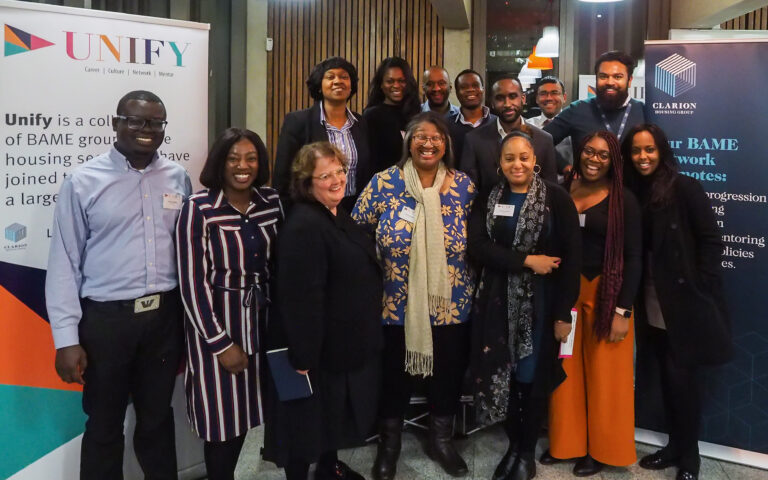Talking about racial inequality at work is difficult. Here are some tips to do it thoughtfully
1Culture – Acknowledge that organisational culture and structures are a fundamental part of the solution. A lack of genuine diversity at the top table has led to a “group think” mentality determining what ‘good’ or ‘success’ looks like. Leaders have to be willing to dismantle and deconstruct these structural barriers to affect genuine and meaningful change.
2Quick wins over quick fixes – Avoid the temptation to find quick solutions – kneejerk actions however well-intentioned are generally short lived. We need actions that provide longevity, are embedded in workplace culture, and provide a genuine basis for relationships built on mutual respect and trust.
3
Talk about race – Recognise that there is a hierarchy of diversity in operation within organisations with ‘Race’ being at the bottom. Talk openly about Race and ethnicity to ensure it gets the same level of energy and focus as other diversity groups. Do not be afraid to have conversations.
4 Take action – Develop and publish a realistic action plan, based on a root and branch review, setting out what individuals/organisations/sector will do to eliminate the hurdles preventing inclusive working practices. Set targets, not quotas. Ensure there are follow on opportunities for people participating in “BAME” initiatives.
5 Listen – Actively listen to black and ethnically diverse people with lived experience of the situation but accept that this may not be a quick win. Building trust and integrity takes time and is a two-way conversation. Finding your voice and using it often takes courage.
Talk about race, its that simple! Use Microsoft Teams or Zoom to host a session on race. Take the time to listen and learn from other people and their experiences. Raise questions on what you have read and your ideas about race e.g. merit based approach does it work? What comes out will definitely shed light on situations that some people have never thought about before.
Shah Alom

6 Use existing BAME Networks – they were set up in response to a need identified within individual organisations. The networks have a wealth of knowledge about your workforce and can connect what you are trying to achieve with the people that you are trying to reach.
7
Acknowledge the time, effort and energy that goes into running staff networks, their contributions feed into organisations Diversity and Inclusion strategies– consider rewarding that commitment to organisational goals. Where is this additional work being reported in the performance framework?
8
Change the corporate narrative – Take positive action and celebrate that black and ethnically diverse people are just as able and skilled as white people. Make this the dominant language in all conversations, publications, plans.
9
Corporate Values – Unpick and examine your corporate values – do they include promotion and support of black and ethnically diverse staff members? If not, why not.
10
Golden Thread – develop from the top to the bottom of the organisation. Hold all people managers to account for promoting and delivering on diversity – incorporate it into individual scorecards, appraisals and KPI’s that form an integral part of the performance framework. Incentivise senior leadership targets.
One thing we would like to see is more resources invested into staff networks. Being on a staff network is voluntarily with added responsibility. Give us that allocated time to get things done without having to cram our role and staff network tasks. Invest in your network chairs and committee, they are the main champions for changing perceptions and delivering your Equality, Diversity and Inclusion strategy!
Alozie Ohuonu

11
One size doesn’t fit all – Understand that there is not one homogeneous approach to solving the problem. Black and ethnically diverse people come in all shapes and sizes with different needs, just like their white counterparts. Work with individuals on understanding their needs and matching those to action plans.
12
Access – Replace the people deficit model with evidence-based decision making; not all black and ethnically diverse people need fixing; some just need access to genuine opportunities to demonstrate their abilities. Create even playing fields for them to compete in.
13
Change rather than innovation – Stop recreating the wheel just because you can – there are organisations, structures, and groups already contributing to the solution: support, learn from and join forces with them. Ask yourself why you are not working with them already? Work to remove the barriers/obstacles (perceived or otherwise) that are preventing you from actively doing so.
14
Data – Mandate the collection of ethnicity data (across a range of indices) and publish it within annual reports – we all know that what gets measured gets done and yet as a sector we still have patchy information.
15
Encourage -The regulator to develop a race standard within the forthcoming Consumer Standards Act. Providing a carrot and stick approach will ensure the issues remain prominent and become entrenched in the way we develop people and deliver services.
Data is the next big step in highlighting areas of inequality within an organisation. One thing we definitely welcomed is the Ethnicity Pay Gap introduced by the Government in 2019.
Anthony Were

16
Publicly – Pledge to increase black and ethnically diverse senior leadership on an organisational level, rather than a sector. This encourages a whole sector change instead of pockets of excellence.
17
Actively – Engage black and ethnically diverse people for senior leadership roles. The “Rooney” rule has worked for some organisations, and we need to build on this to ensure that organisations are drawing from the best talent pools.
18
Board representation – Increase the number of black and ethnically diverse people on boards – create shadowing, secondment opportunities, support organisations providing access to and training on working on boards.
19
Transparency – Improve the representation of black and ethnically diverse people on shortlists at middle management level through transparent processes – share the rules for progression, make them fair and consistent for all employees.
20
Zero Tolerance – Respond swiftly to claims of bullying and harassment and. Instil a victim centred approach to mitigate impacts and robustly enforce your organisations policies and procedures against non-inclusive behaviours
21
Encourage self-selection of initiatives – Embrace difference, open up all opportunities to all people. There are many more talented and skilled black and ethnically diverse people within organisations than those that are spotted, sponsored, and put forward for opportunities. Remember that feeling when you were picked last for the sports team at school? Imagine, having to go through that every time an opportunity arises.
April 2020 we see the Chief Executives of the G15 come together to sign a pledge to encourage more diversity in the boardroom and at senior level.
A big moment in history!
Jessica Bembridge



